Best Hikes in Peru
Discover Peru's top hikes: From the iconic Inca Trail to hidden gems
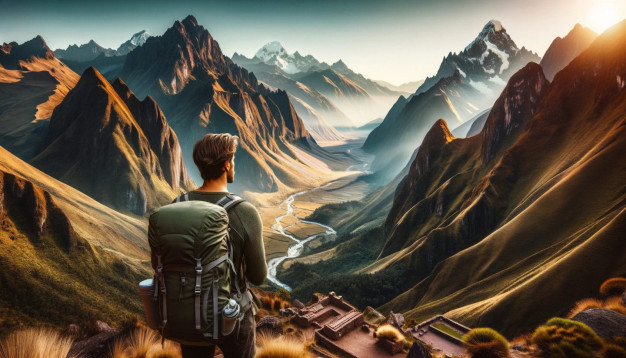
Imagine standing atop a mountain, surrounded by lush green forests, pristine glacial lakes, and panoramic views of the Andes. This is the allure of hiking in Peru. A country steeped in history and dotted with ancient ruins, it offers an array of trails that showcase its natural beauty and cultural richness. From the legendary Inca Trail to the hidden depths of Colca Canyon, every trail is a journey of discovery. But with so many options, which hikes should make your bucket list? Let’s explore!
Peru Hikes Essentials
- Peru offers a wide range of hiking experiences, from iconic treks like the Inca Trail to lesser-known gems like Laguna 69.
- Each hike has its own difficulty level, altitude range, and highlights, catering to different preferences and fitness levels.
- It’s recommended to hire reputable tour companies or local guides for a safe and enriching experience.
- Prepare for high altitudes, changing weather conditions, and be mindful of environmental conservation.
- Peru’s natural beauty and cultural wonders make it a dream destination for adventure enthusiasts.
- Best hikes in the north of Peru:
- Best hikes in the south of Peru:
- One Day Hikes:
- 2 to 4 days Hikes:
- 5 days and more hikes :
The Allure of Peru’s Trails
Why is Peru often on the top of every hiker’s dream destination list? Beyond its world-famous Machu Picchu, it’s the country’s sheer diversity that captivates. Peru is a land of contrasts, from the Amazon rainforest to the towering peaks of the Andes, and each trail offers a unique experience. Did you know that the Andes are the longest continental mountain range in the world? Or that the Amazon basin covers almost 60% of Peru? The combination of these landscapes creates a hiker’s paradise.
Peru’s official tourism site provides a wealth of information on the vast landscapes and trekking opportunities available.

Preparing for Your Hiking Adventure
Before lacing up those hiking boots and hitting the Peruvian trails, there are some essential preparations to keep in mind. Peru’s diverse landscape means the climate can vary significantly from one trail to another. Are you ready for the adventure of a lifetime?
Essential hiking gear specific to Peru’s climate
Peru’s diverse climate zones mean you’ll need to pack smart. For the high-altitude regions like the Andes, think layers. Thermal underwear, a fleece jacket, and a waterproof outer layer are must-haves. Don’t forget a sun hat, sunglasses, and sunscreen for the intense mountain sun. In the rainforest regions, lightweight, quick-drying clothing and insect repellent will be your best friends. Remember, it’s always better to be over-prepared than under-prepared. What’s the one item you can’t hike without?
Safety tips and guidelines for a smooth hike
While hiking in Peru is a dream come true, it’s crucial to prioritize safety. Always inform someone of your hiking plans and estimated return time. Hiring a local guide can also provide valuable insights into the terrain and culture. It’s also worth noting that some trails, like the Inca Trail, require permits. Make sure to book in advance as they often sell out months ahead.
Knowing the best time of year for each trail
While the idea of hiking amidst the misty clouds and drizzling rain might sound romantic, the reality can be quite challenging. The best time for most hikes in Peru is during the dry season, which runs from May to September. This period offers clear skies and a lower chance of rain, making the trails more accessible. However, it’s also the busiest season, so if you’re looking for solitude, consider the shoulder months like April and October. Did you know that the Inca Trail is closed for maintenance every February? Always check trail conditions and accessibility before planning your hike.
Inca Trail
The Inca Trail in Peru is a legendary trek through the Andes Mountains, leading to the remarkable ruins of Machu Picchu. This 26-mile trail showcases breathtaking landscapes and ancient stone pathways, offering a captivating blend of history, nature, and spirituality. It is an unforgettable journey that highlights the ingenuity of the Incas and the natural beauty of Peru.
- Difficulty Level: Moderate to Challenging
- Minimum Altitude: 2,400 meters
- Maximum Altitude: 4,215 meters
- Total Kilometers: 43 kilometers
- Solo Trek: No, you must go with a licensed tour operator
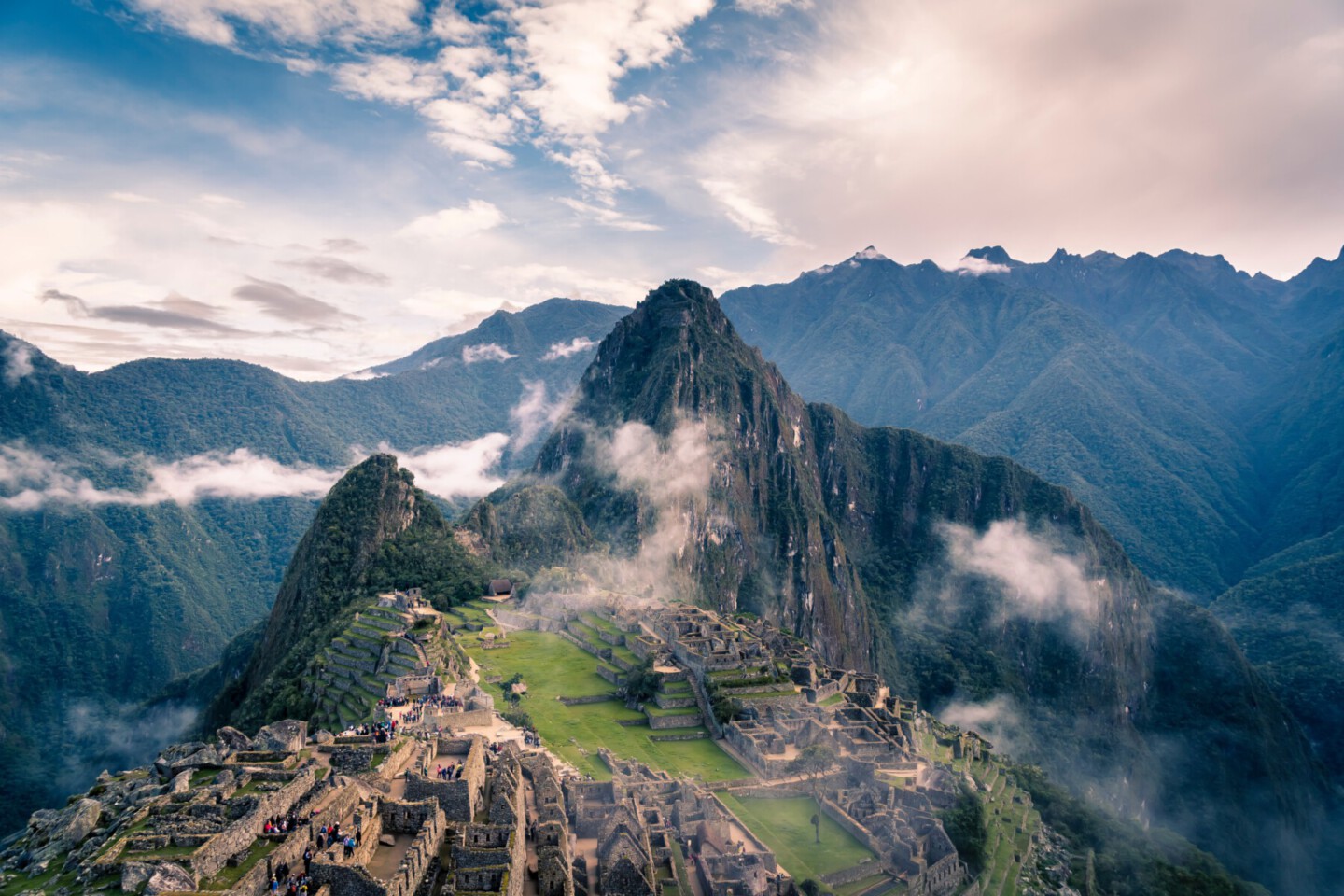
Huayna Picchu
Huayna Picchu is a challenging peak located in Machu Picchu, offering breathtaking panoramic views of the ancient ruins and surrounding mountainous landscapes, rewarding adventurers with a sense of achievement and a unique perspective of this iconic archaeological wonder.
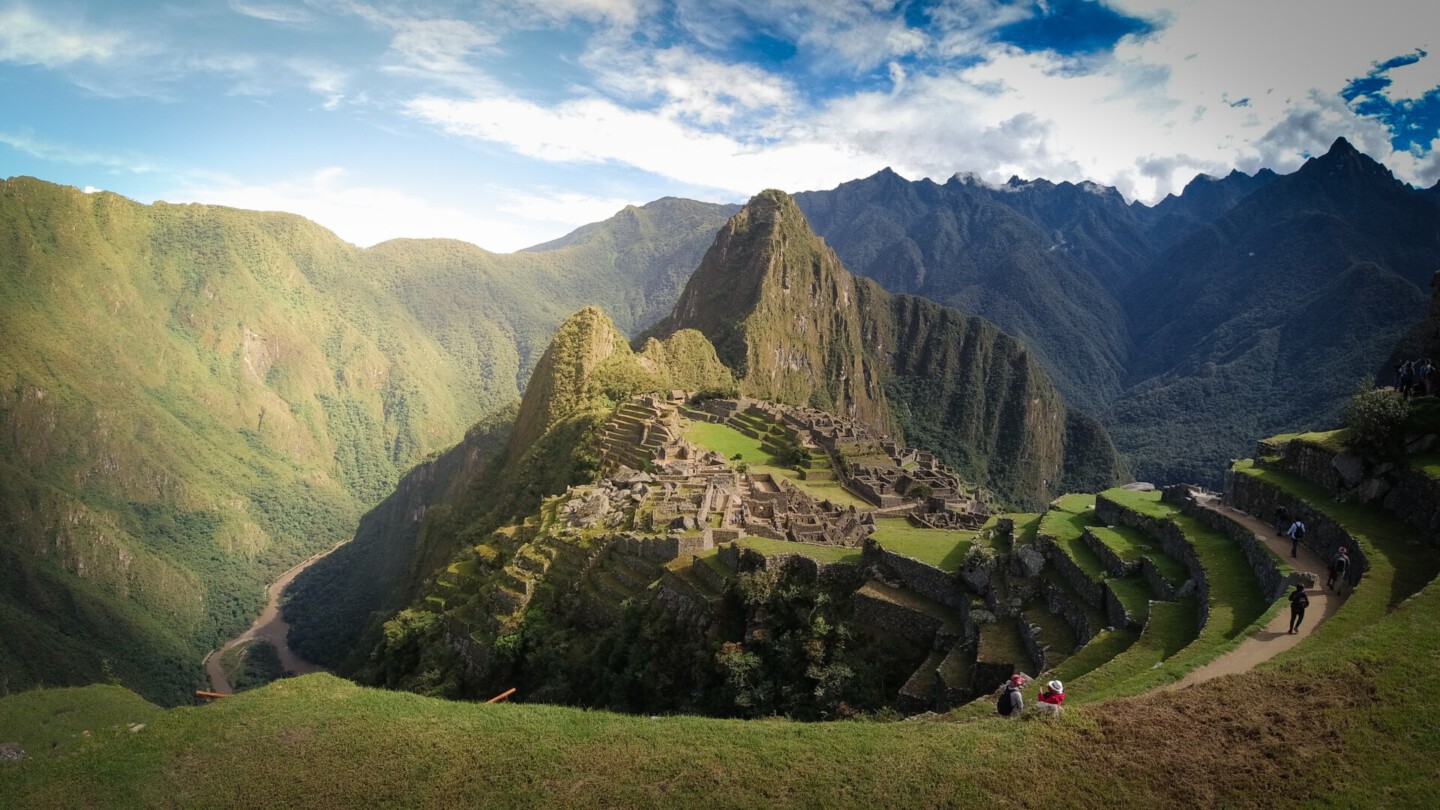
Salkantay Trek
The Salkantay Trek is a captivating alternative to the Inca Trail, showcasing stunning natural beauty. This challenging trek takes you through diverse ecosystems, including snow-capped mountains, lush cloud forests, and turquoise lakes, providing an unforgettable adventure and a deeper connection with the Andean landscapes.
- Difficulty Level: Challenging
- Minimum Altitude: 2,800 meters
- Maximum Altitude: 4,650 meters
- Total Kilometers: 74 kilometers
- Solo Trek: Yes, but recommended to go with a guide or group for safety
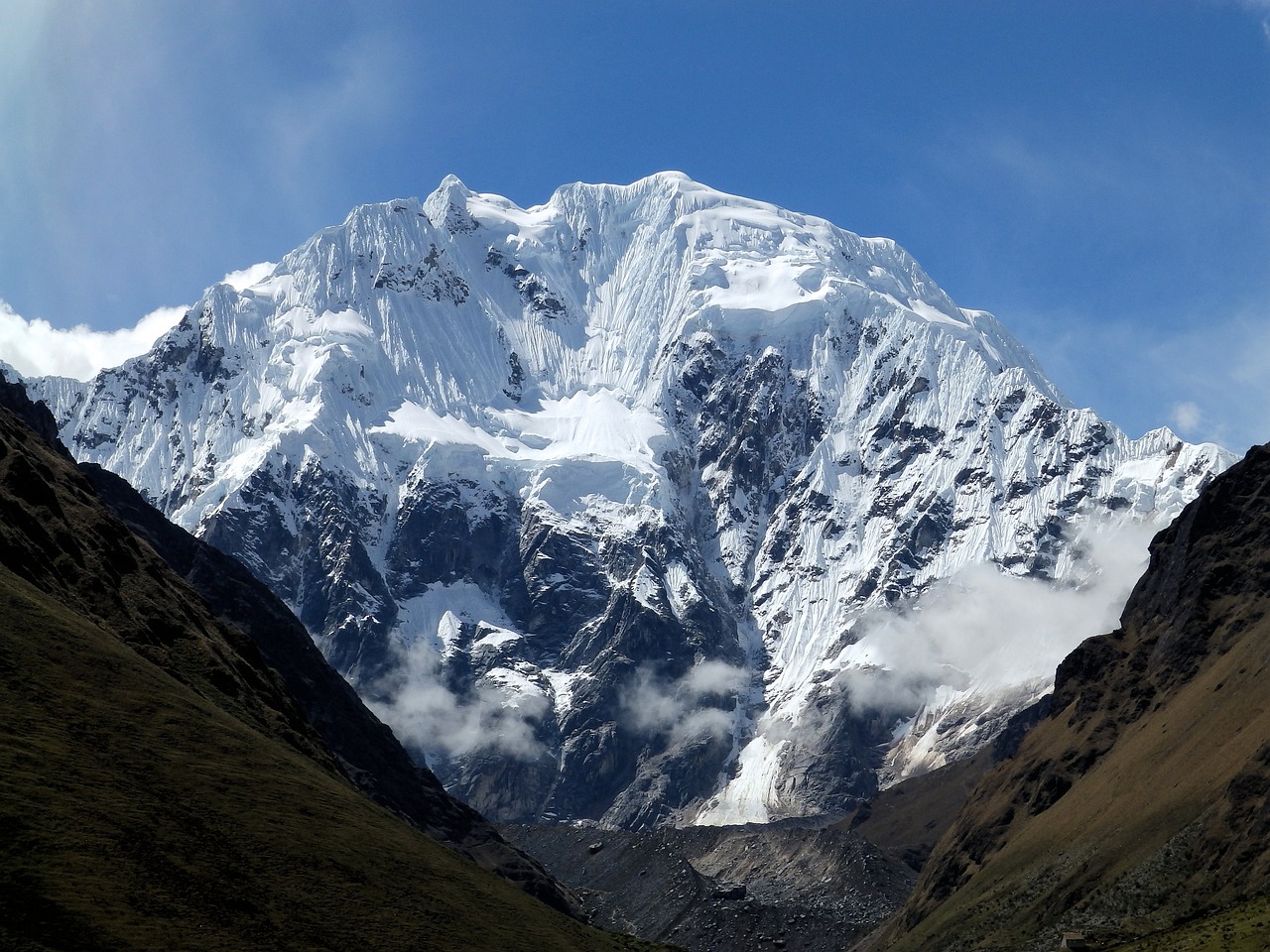
Rainbow Mountain
Rainbow Mountain, also known as Vinicunca, is a geological marvel located in the Peruvian Andes. Hiking to Rainbow Mountain reveals a mesmerizing display of vibrant colors, created by mineral-rich sediments, against a backdrop of majestic peaks, offering a surreal and awe-inspiring experience for nature enthusiasts.
- Difficulty Level: Moderate
- Minimum Altitude: 4,326 meters
- Maximum Altitude: 5,200 meters
- Total Kilometers: 15 kilometers
- Solo Trek: Yes, but it’s advisable to join a tour for transportation and guidance
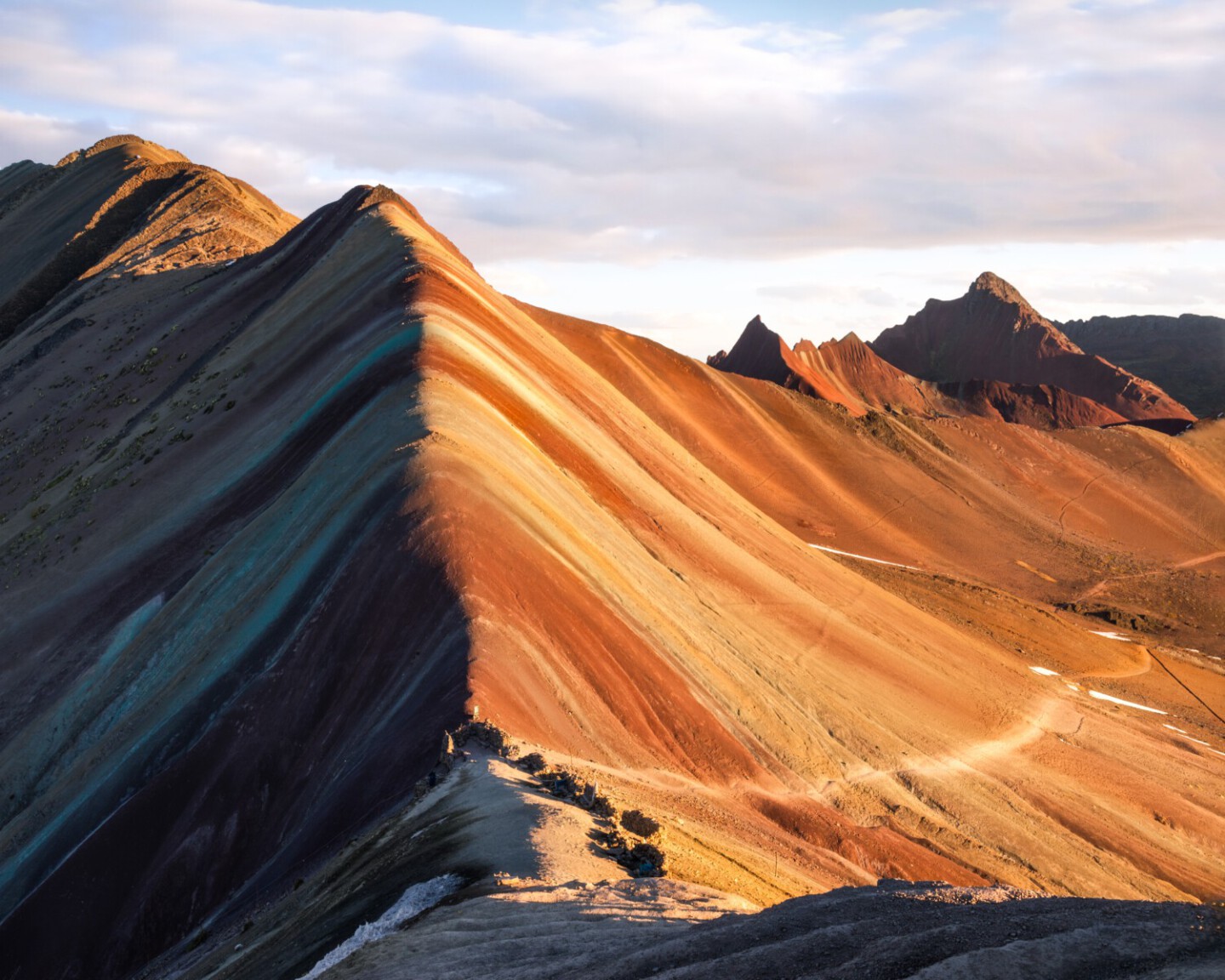
Ausangate Trek
The Ausangate Trek is a high-altitude adventure that leads you through the remote and pristine landscapes of the Ausangate Mountain region. This challenging trek rewards hikers with breathtaking views of snow-capped peaks, turquoise glacial lakes, and encounters with local communities, providing an authentic and immersive Andean experience.
- Difficulty Level: Challenging
- Minimum Altitude: 4,200 meters
- Maximum Altitude: 5,200 meters
- Total Kilometers: 68 kilometers
- Solo Trek: No, it’s recommended to go with a local guide or tour operator

Choquequirao Trek
The Choquequirao Trek takes intrepid adventurers on a lesser-known journey to the ancient Inca ruins of Choquequirao. This challenging trek offers a glimpse into the past, traversing rugged terrains, deep canyons, and dense forests, culminating in the discovery of this impressive archaeological site, often referred to as the “sister city” of Machu Picchu.
- Difficulty Level: Challenging
- Minimum Altitude: 1,950 meters
- Maximum Altitude: 3,050 meters
- Total Kilometers: 58 kilometers
- Solo Trek: Yes, but it’s recommended to hire a local guide for navigation and insights
Colca Canyon
Colca Canyon is one of the world’s deepest canyons, boasting breathtaking natural beauty and cultural richness. Hiking along its dramatic trails reveals picturesque terraced landscapes, soaring condors, and traditional Andean villages, providing a unique opportunity to connect with nature and immerse in local Andean traditions.
- Difficulty Level: Moderate to Challenging
- Minimum Altitude: 2,287 meters
- Maximum Altitude: 4,910 meters
- Total Kilometers: Varies (depending on the chosen trail)
- Solo Trek: Yes, but joining a tour or hiring a guide is recommended for safety and cultural insights
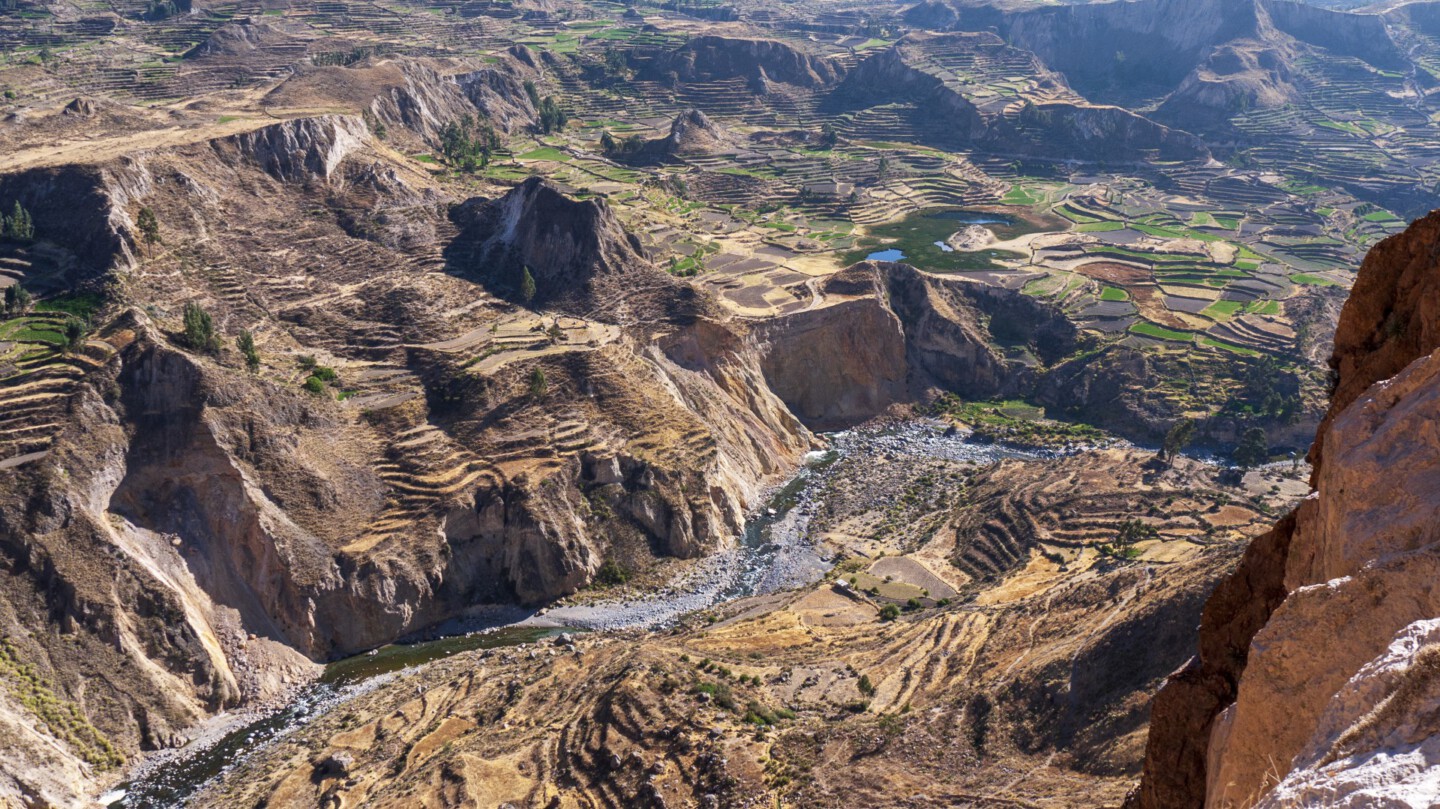
Santa Cruz Trek
The Santa Cruz Trek is a classic trek in the Cordillera Blanca, showcasing the mesmerizing beauty of turquoise lakes, towering snow-capped peaks, and picturesque valleys. This moderate trek offers a perfect blend of natural wonders, tranquility, and the chance to witness the diverse flora and fauna of the Huascarán National Park.
- Difficulty Level: Moderate
- Minimum Altitude: 2,870 meters
- Maximum Altitude: 4,750 meters
- Total Kilometers: 50 kilometers
- Solo Trek: Yes, but it’s advisable to join a group for safety and to navigate the trail
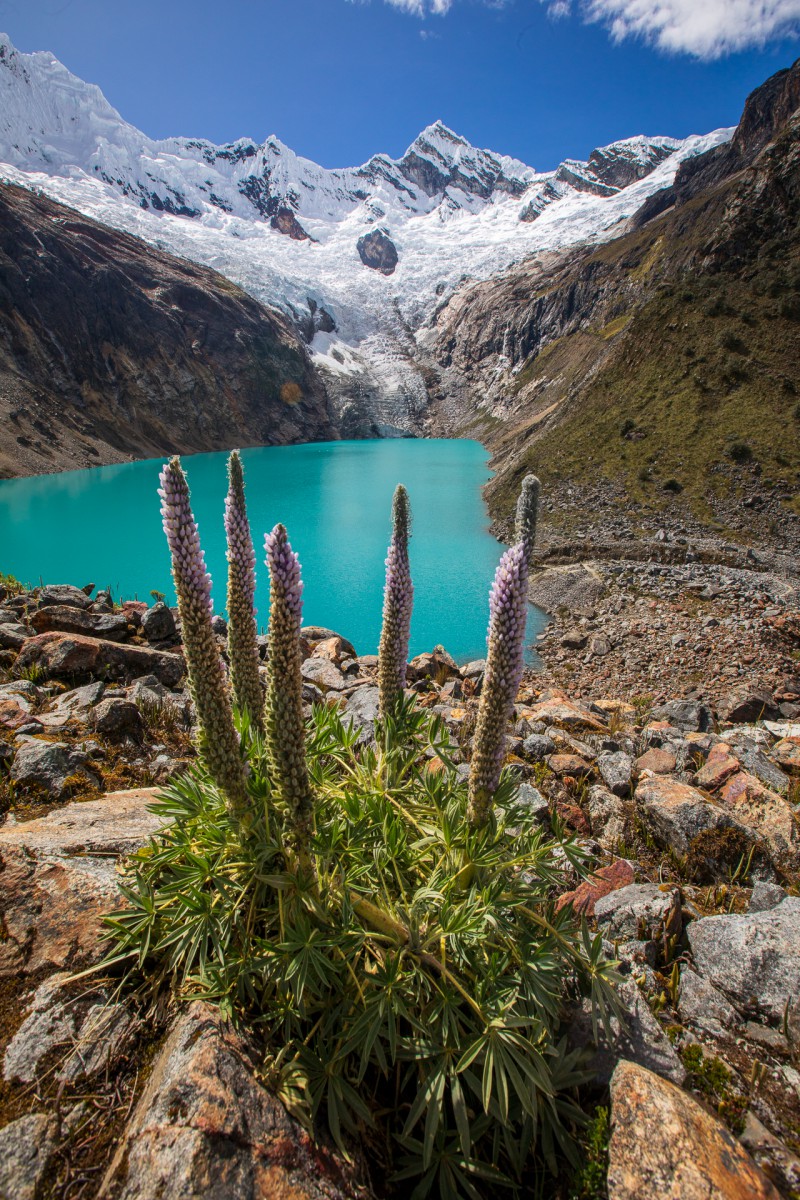
Laguna 69
Laguna 69 is a hidden gem nestled in the Cordillera Blanca. This moderate hike leads to a stunning turquoise lake surrounded by majestic snow-capped peaks and cascading waterfalls. The journey rewards hikers with breathtaking views of the Andean landscapes and a sense of serenity in nature’s embrace.
- Difficulty Level: Moderate
- Minimum Altitude: 3,850 meters
- Maximum Altitude: 4,630 meters
- Total Kilometers: 12 kilometers
- Solo Trek: Yes, the trail is well-marked and can be done independently
Huaraz Peaks
The Huaraz Peaks offer thrilling high-altitude mountaineering experiences, attracting adventure seekers from around the world. Conquer stunning peaks like Ishinca, Tocllaraju, and Pisco, witnessing awe-inspiring panoramic views of the surrounding mountain ranges and immersing in the exhilaration of the Andean summits, making unforgettable memories in the heart of the Cordillera Blanca.
- Difficulty Level: Challenging
- Minimum Altitude: Varies (depending on the chosen peak)
- Maximum Altitude: Varies (depending on the chosen peak)
- Total Kilometers: Varies (depending on the chosen peak)
- Solo Trek: No, it’s highly recommended to hire a certified mountain guide

General Tips for Hiking in Peru
- Acclimatize to the altitude before embarking on high-altitude treks.
- Pack appropriate clothing, including layers, a waterproof jacket, and sturdy hiking boots.
- Stay hydrated and carry a water purification system.
- Pack essential items like sunscreen, insect repellent, a first aid kit, and a headlamp.
- Respect the environment and local communities, follow designated trails, and leave no trace.
Tips for Sustainable and Responsible Hiking
As travelers, it’s our responsibility to ensure that the places we visit remain pristine for future generations. This is especially true for treks, where the delicate balance of nature and culture can be easily disrupted. How can you make a positive impact on your next hiking adventure in Peru?
Leave No Trace principles in Peru
The Leave No Trace principles, which advocate minimal environmental impact, are a great place to start. From packing out all trash to avoiding feeding wildlife and minimizing campfire impact, every small action counts. Remember, the trails are not just tourist attractions; they’re also habitats and sacred spaces. How do you practice sustainability in your travels?
Respecting local communities and traditions
As you pass through villages and interact with locals, it’s essential to approach with respect and sensitivity. Always ask for permission before taking photographs and be mindful of local customs and traditions. Often, a simple smile or greeting in the local language (try “Hola” or “Allianchu” in Quechua) can go a long way in building connections. Isn’t travel all about mutual respect and understanding?
Supporting local businesses and guides
One of the best ways to contribute positively is by supporting local economies. Whether it’s hiring a local guide, buying handicrafts, or savoring local delicacies, every sol spent goes a long way in supporting communities. Plus, local guides offer insights and stories that enrich the trekking experience. Who wouldn’t want a journey filled with local tales and flavors?